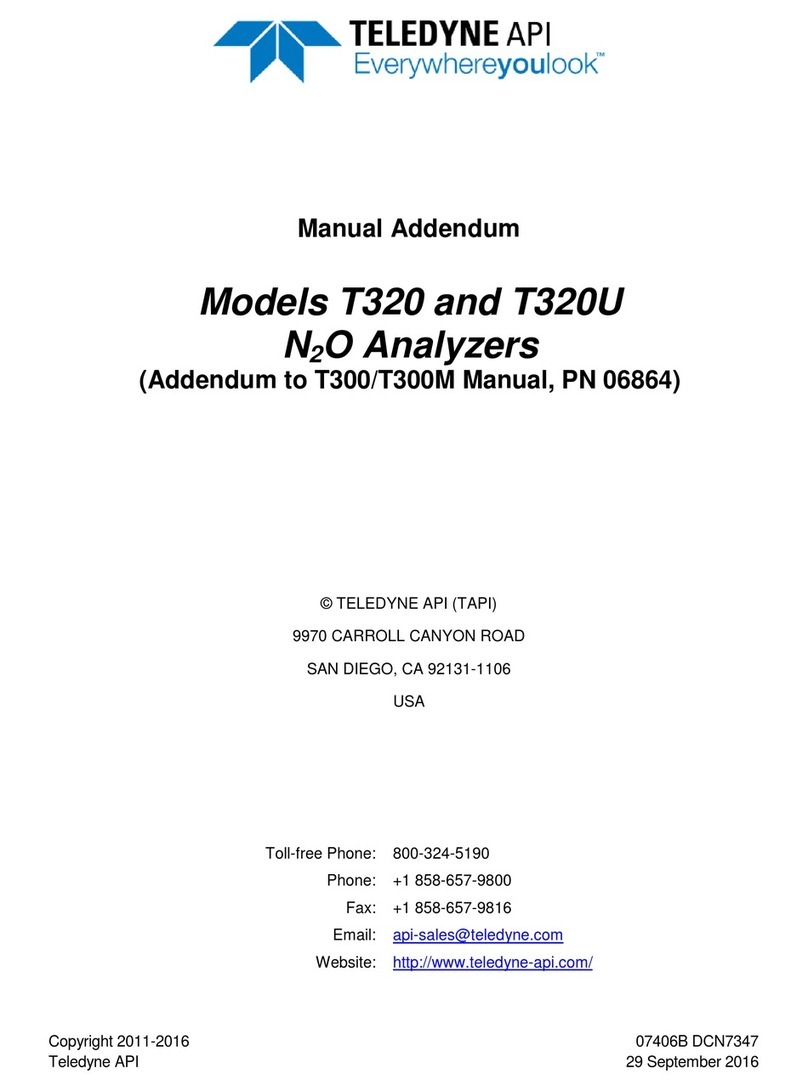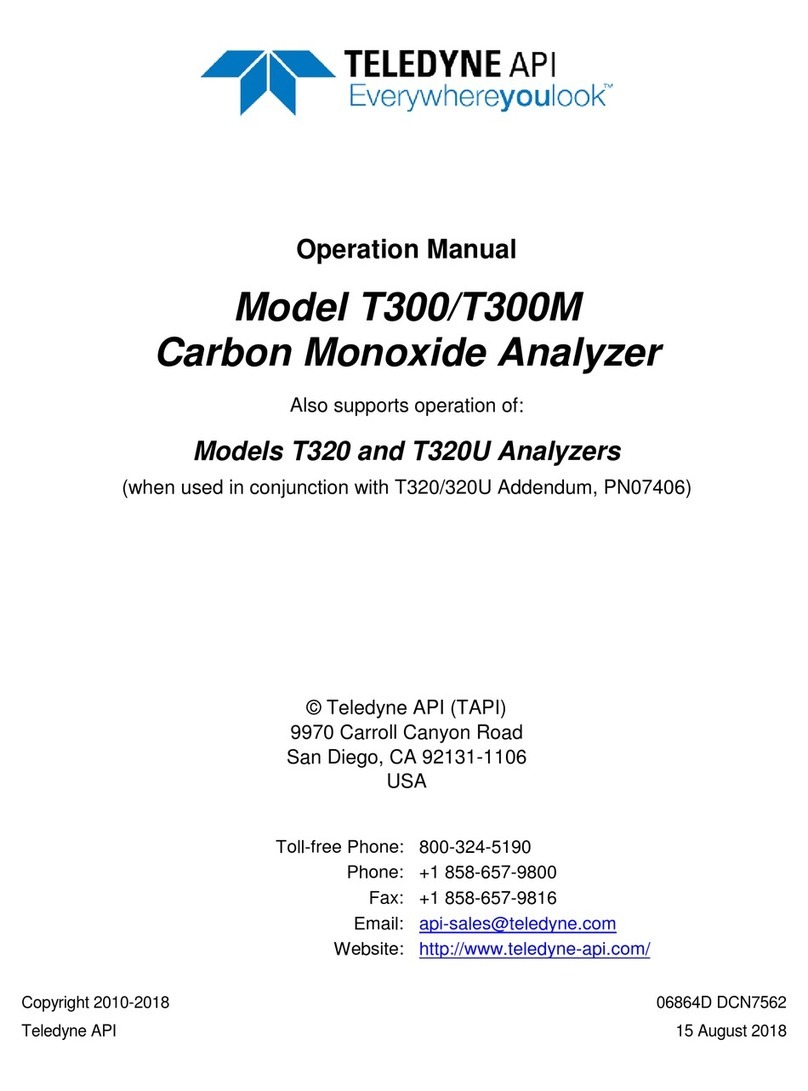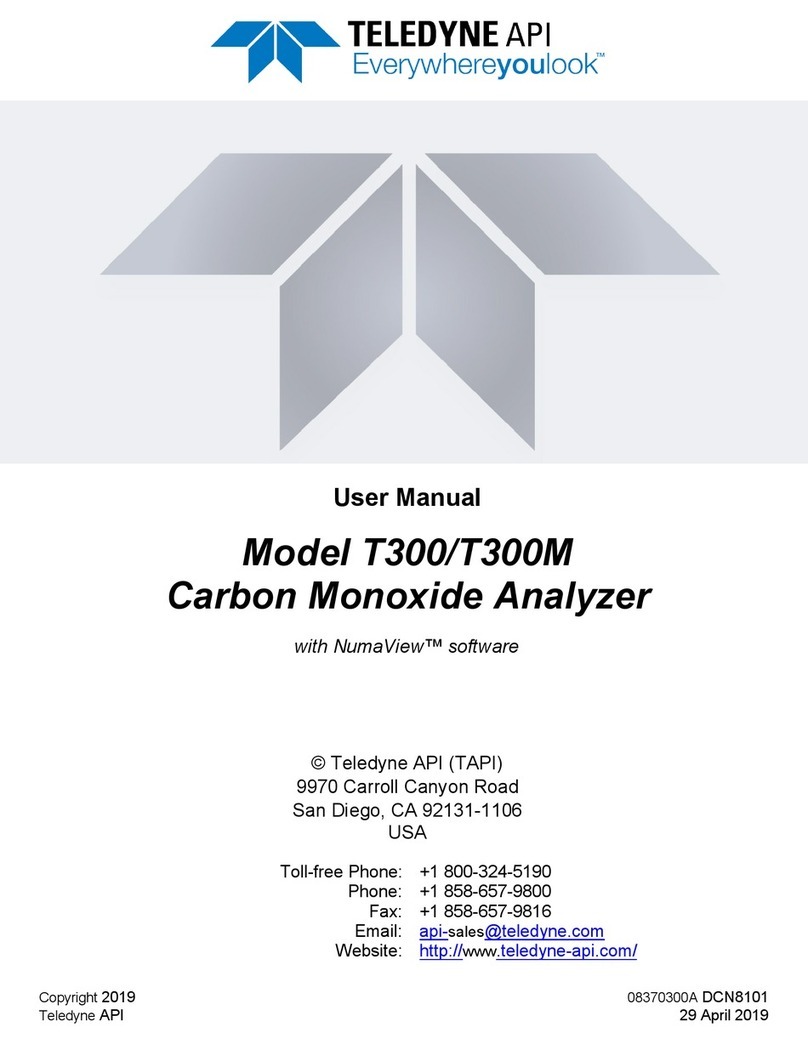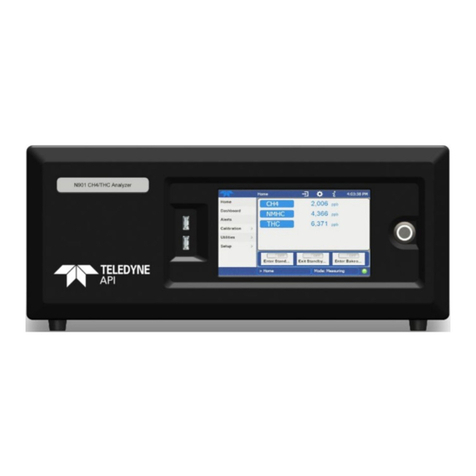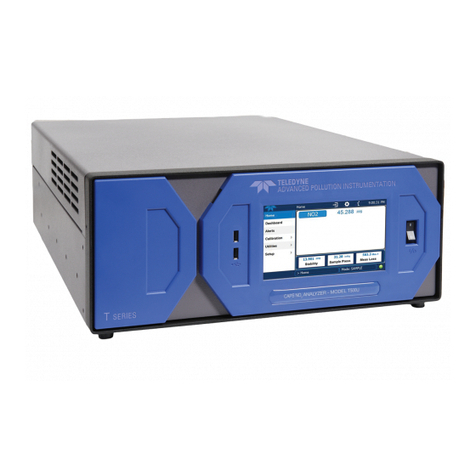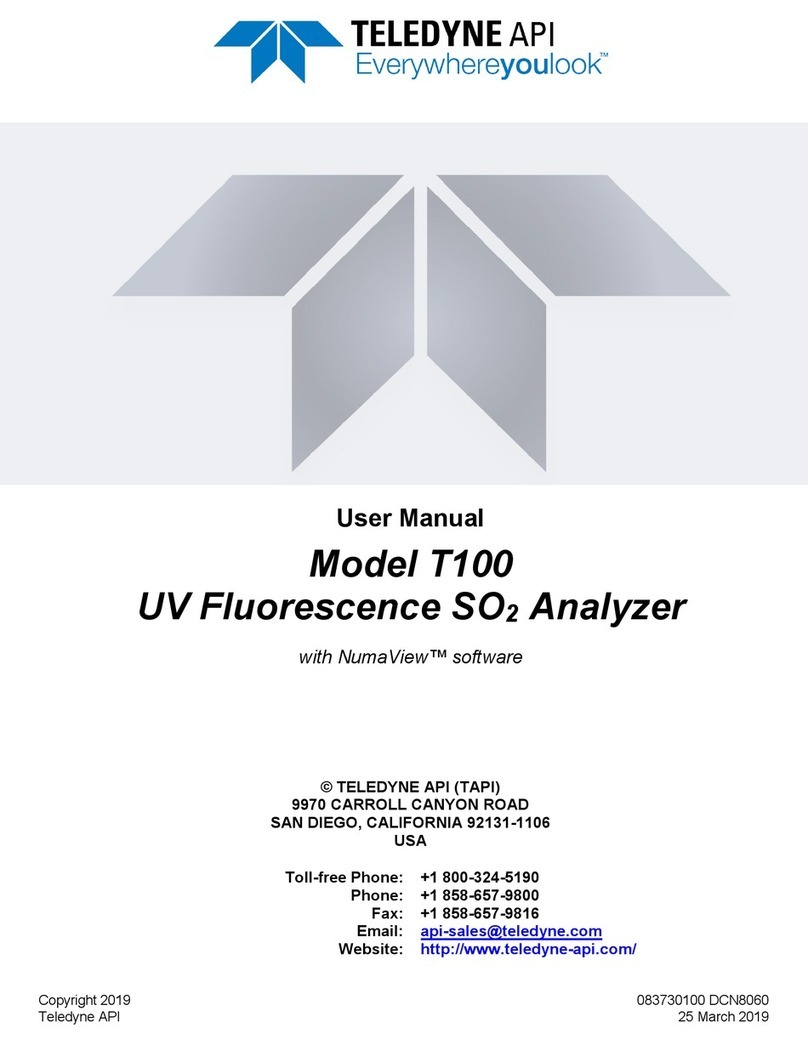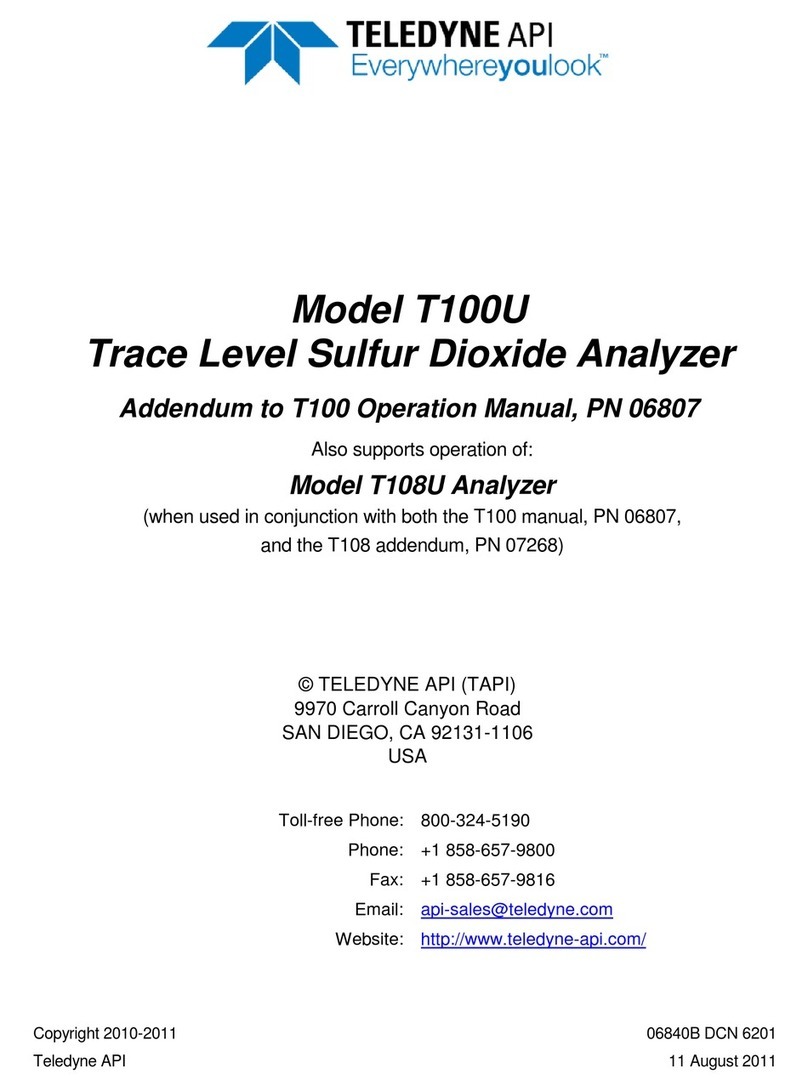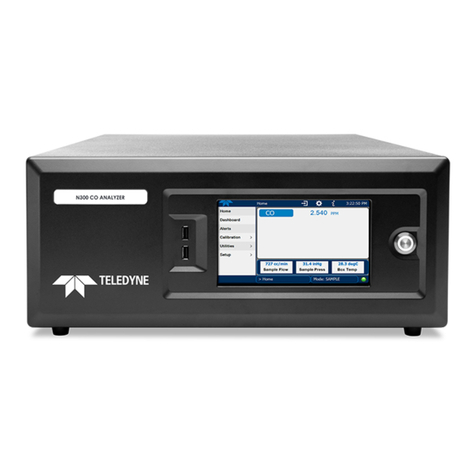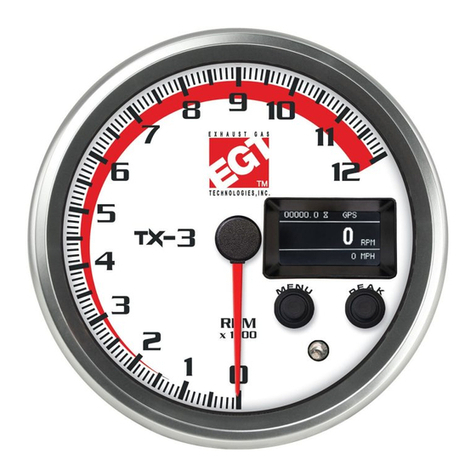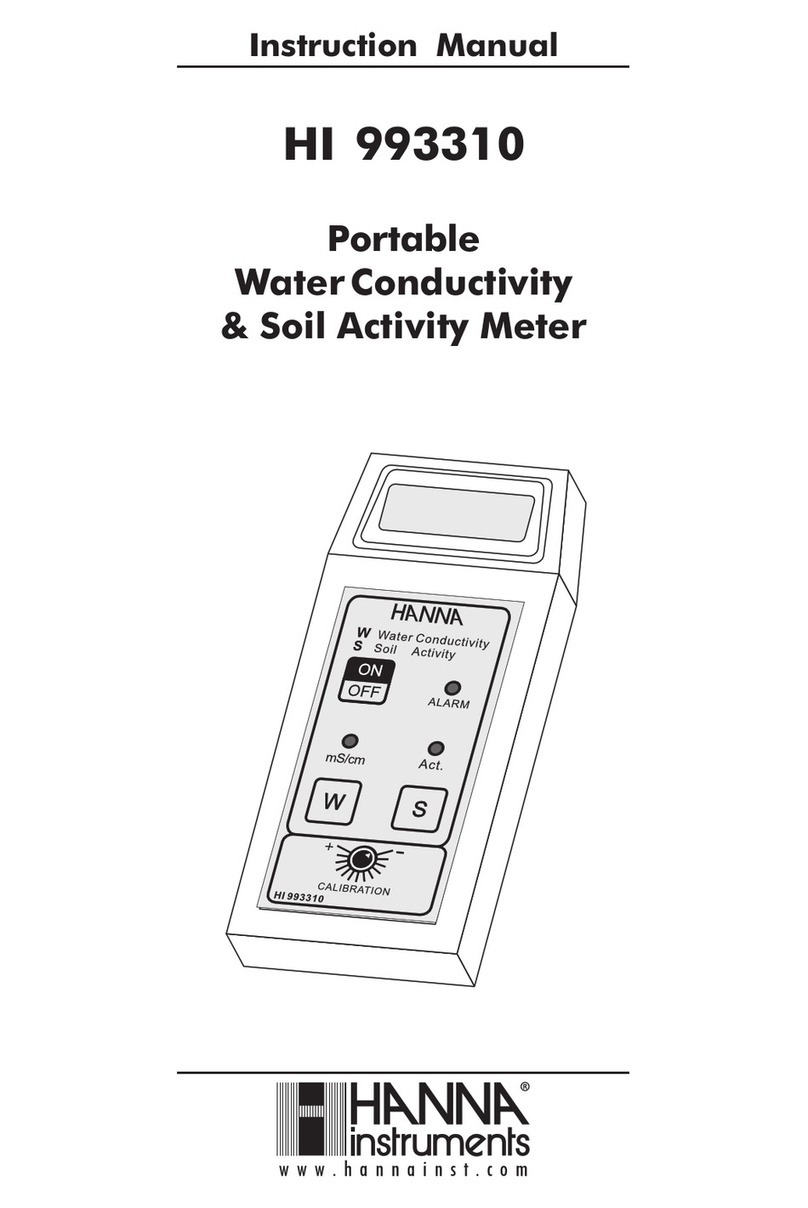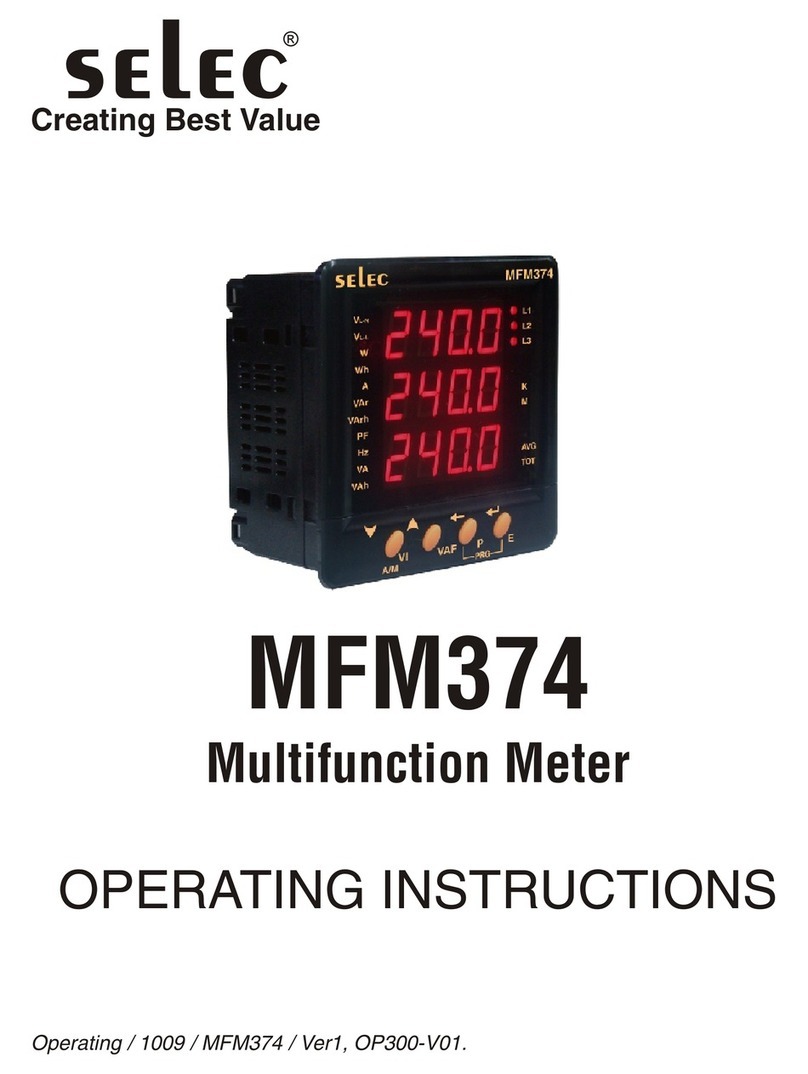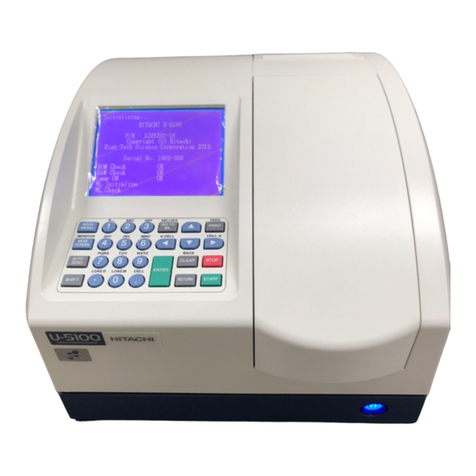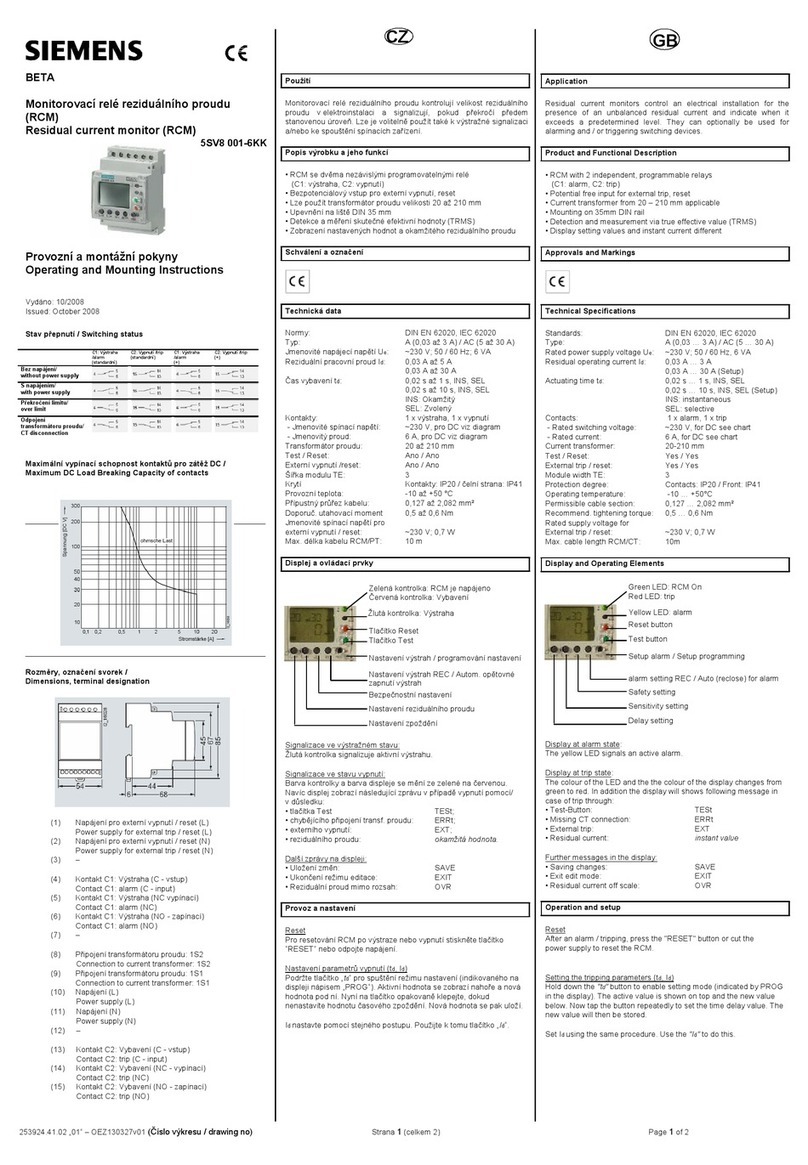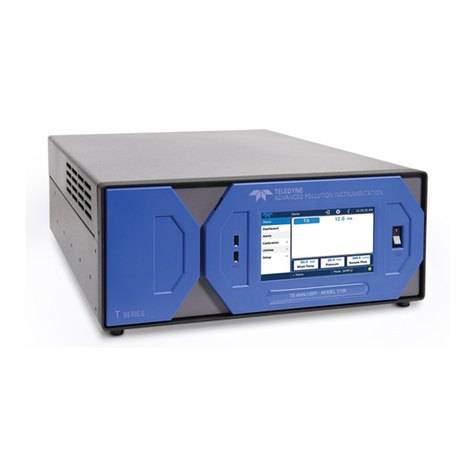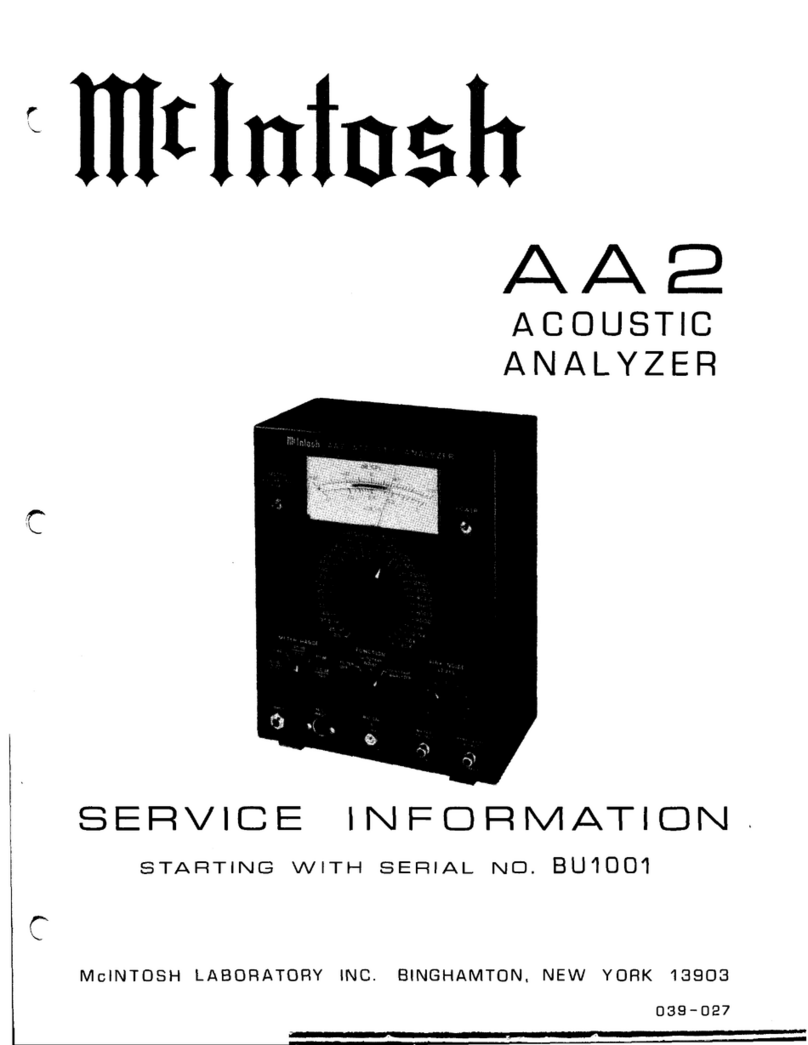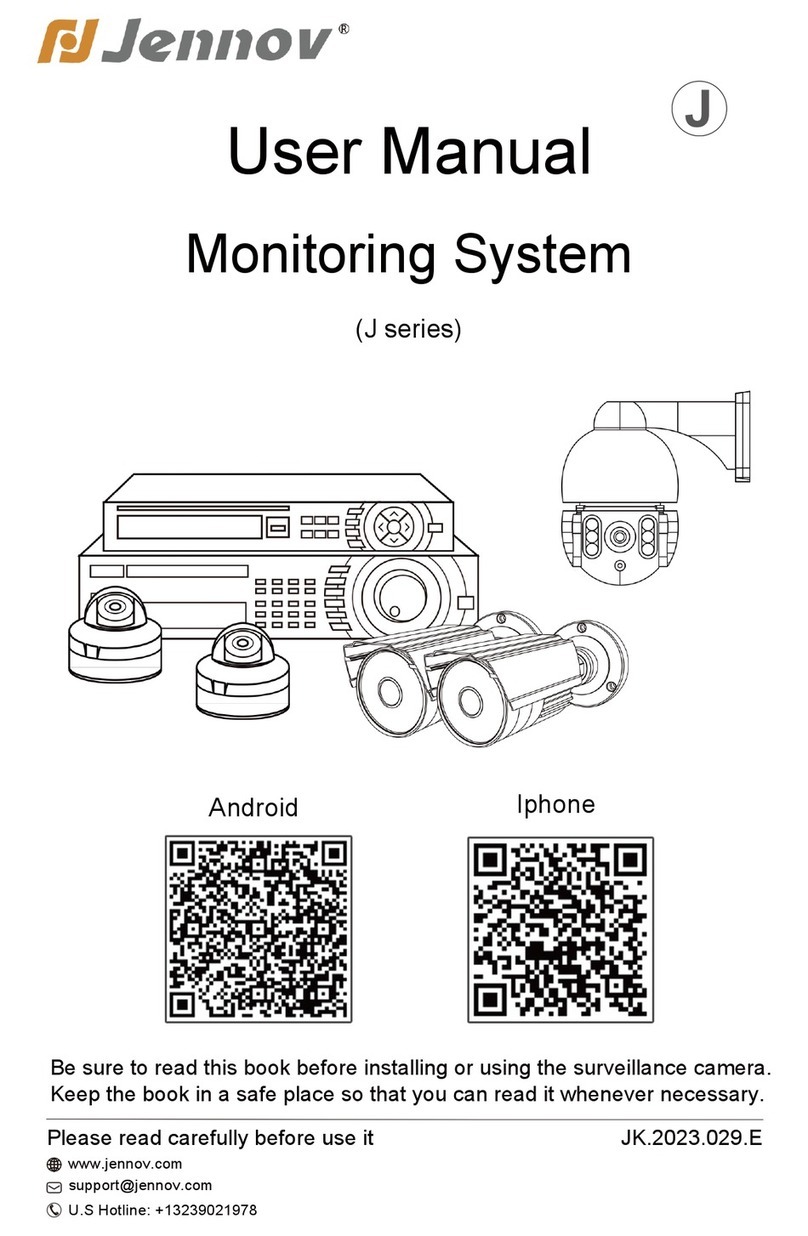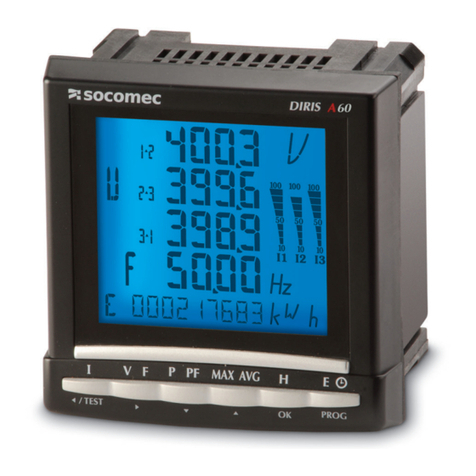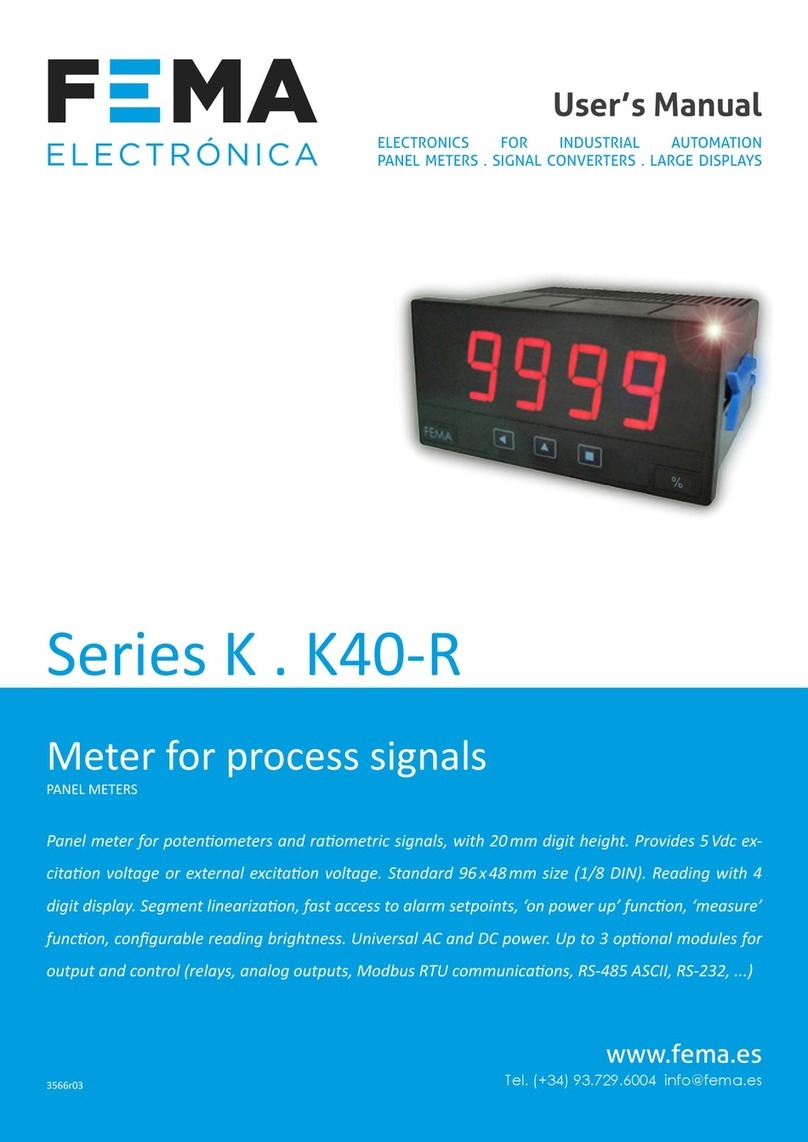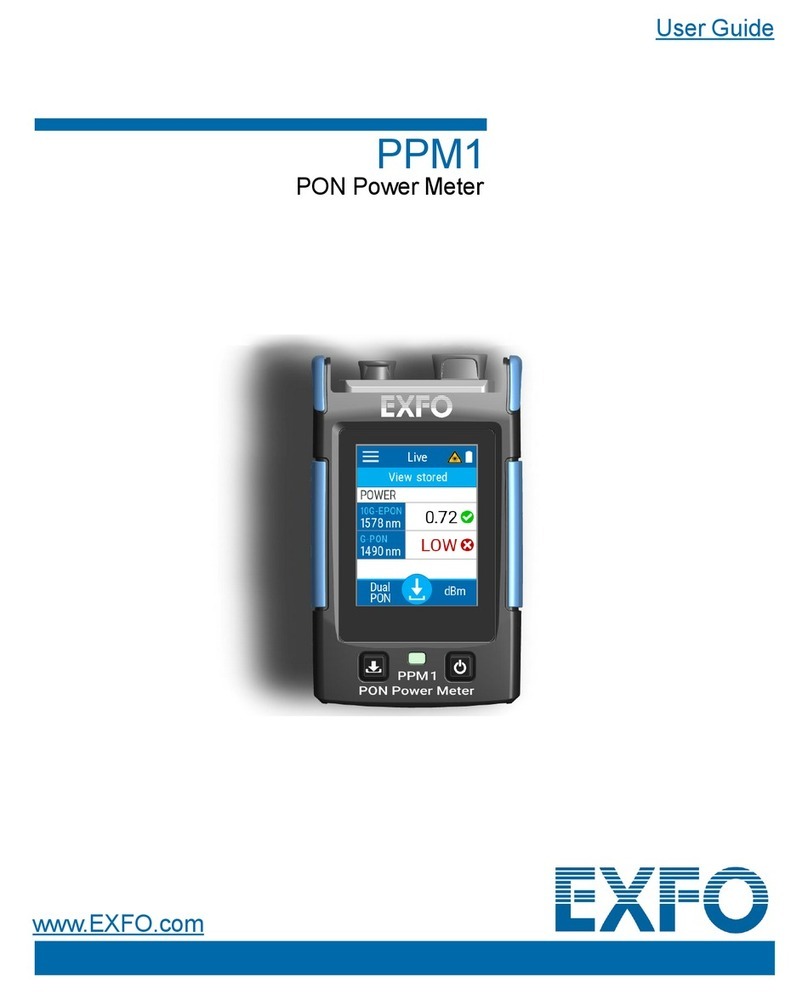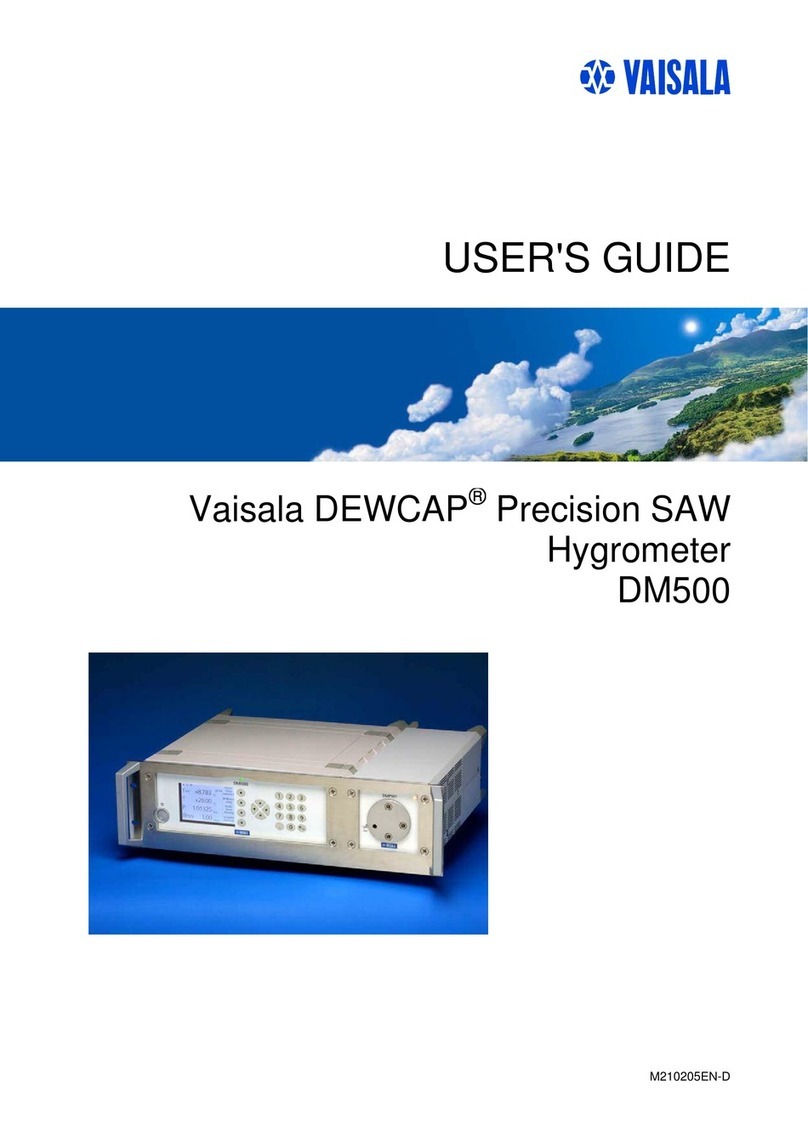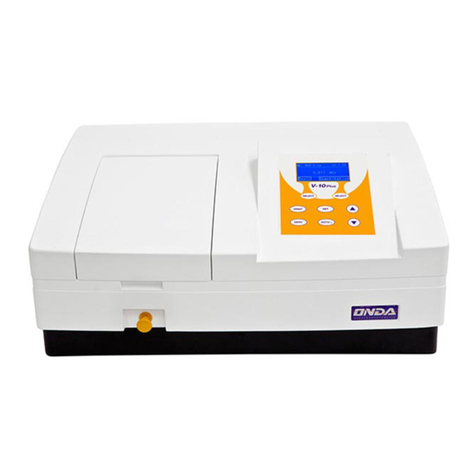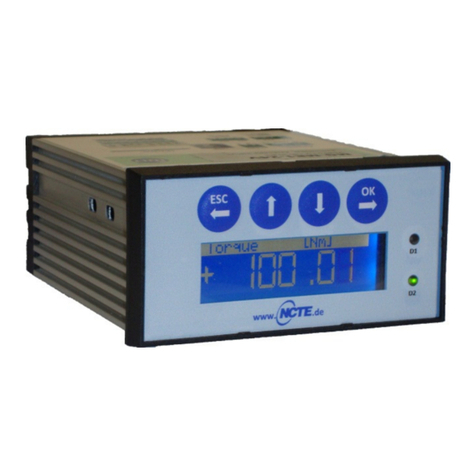
09420B DCN8501 Teledyne API Model 480M O3Monitor User Manual vii
TABLE OF CONTENTS
1. INTRODUCTION........................................................................................................11
2. SPECIFICATIONS AND AGENCY APPROVALS ................................................13
2.1. MODEL 480M SPECIFICATIONS..........................................................................................................13
2.2. COMPLIANCE AND CERTIFICATIONS...................................................................................................14
3. GETTING STARTED.................................................................................................15
3.1. UNPACKING .......................................................................................................................................16
3.2. MECHANICAL INSTALLATION ............................................................................................................16
3.3. AC POWER CONNECTION...................................................................................................................18
3.3.1. Wiring Requirements...................................................................................................................18
3.3.2. Wiring Instructions .....................................................................................................................19
3.4. ELECTRICAL I/O CONNECTIONS.........................................................................................................20
3.4.1. Analog Output.............................................................................................................................22
3.4.2. Status Outputs .............................................................................................................................23
3.4.3. High-Current Relay Outputs .......................................................................................................24
3.4.4. FailSafe Operation Signal And Relay Outputs............................................................................24
3.4.5. Digital Communication Interfaces..............................................................................................25
3.5. PNEUMATIC CONNECTIONS................................................................................................................26
3.5.1. Sample Inlet Connection .............................................................................................................26
3.5.2. Exhaust Connection ....................................................................................................................27
3.6. PNEUMATIC FLOW DIAGRAM.............................................................................................................28
4. CALIBRATION...........................................................................................................29
4.1. FACTORY CALIBRATION ....................................................................................................................29
4.2. ZERO,SPAN,AND FLOW CALIBRATIONS ............................................................................................29
5. OPERATION ...............................................................................................................31
5.1. FRONT PANEL OVERVIEW ..................................................................................................................31
5.1.1. Display ........................................................................................................................................32
5.1.2. Control Keys ...............................................................................................................................32
5.1.3. Indicator LEDs............................................................................................................................32
5.2. FRONT PANEL MENUS........................................................................................................................33
5.2.1. Editing Settings ...........................................................................................................................33
5.2.2. Sensor Menu................................................................................................................................34
5.2.3. Diag Menu ..................................................................................................................................34
5.2.4. Setup Menu..................................................................................................................................36
5.2.5. Status Screen...............................................................................................................................38
6. DIGITAL COMMUNICATIONS..............................................................................39
6.1. ETHERNET CONFIGURATION ..............................................................................................................39
6.2. SERIAL CONFIGURATION -RS-232 AND RS-485................................................................................40
6.3. MODBUS REGISTER MAPS...............................................................................................................42
6.3.1. MODBUS Commands Supported................................................................................................42
6.3.2. Notes on MODBUS registers ......................................................................................................42
6.3.3. Real-Time Concentration and Status Registers (Read Only) ......................................................43
6.3.4. Instrument Setup and Configuration Registers (Read / Write)....................................................44
7. MAINTENANCE.........................................................................................................45
7.1. MAINTENANCE SCHEDULE.................................................................................................................45
7.2. INSTRUMENT LAYOUT .......................................................................................................................46






















